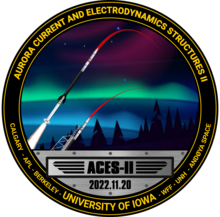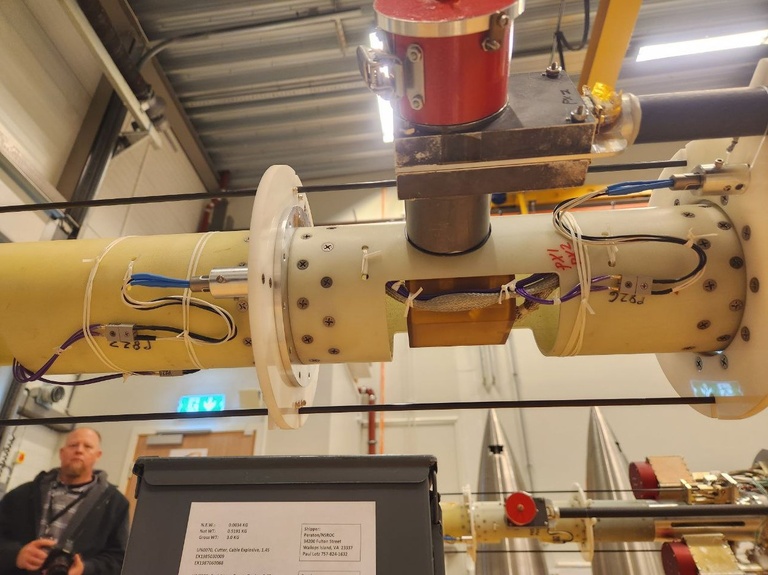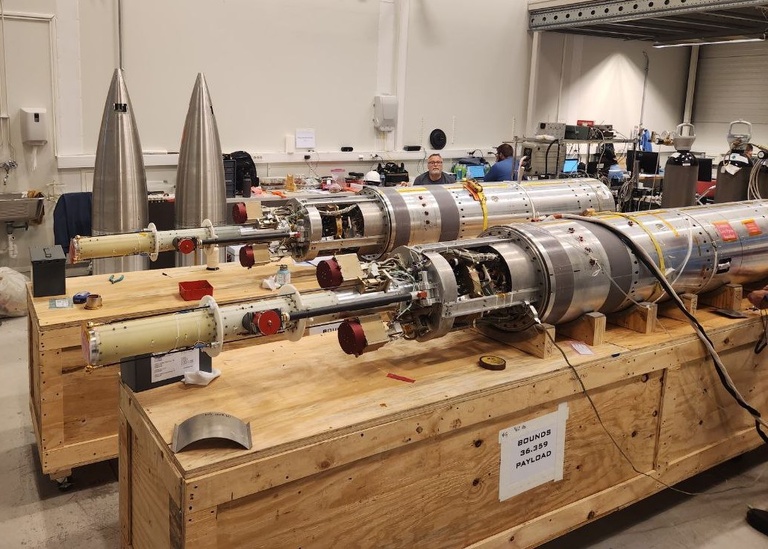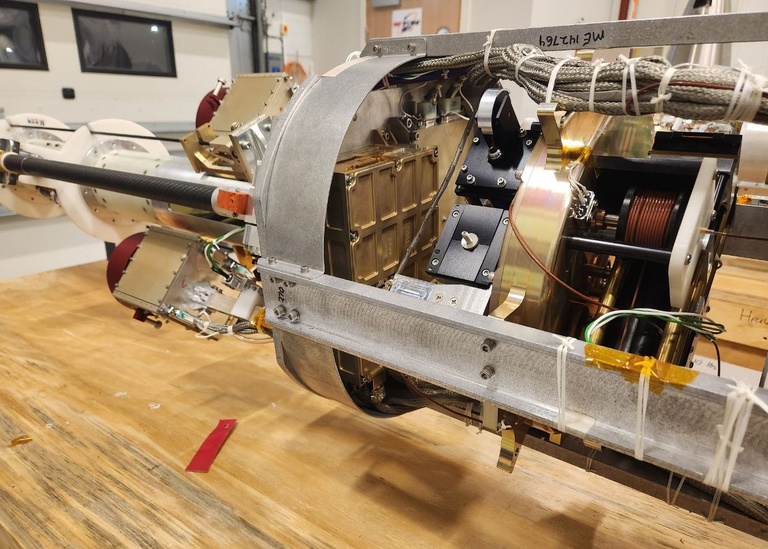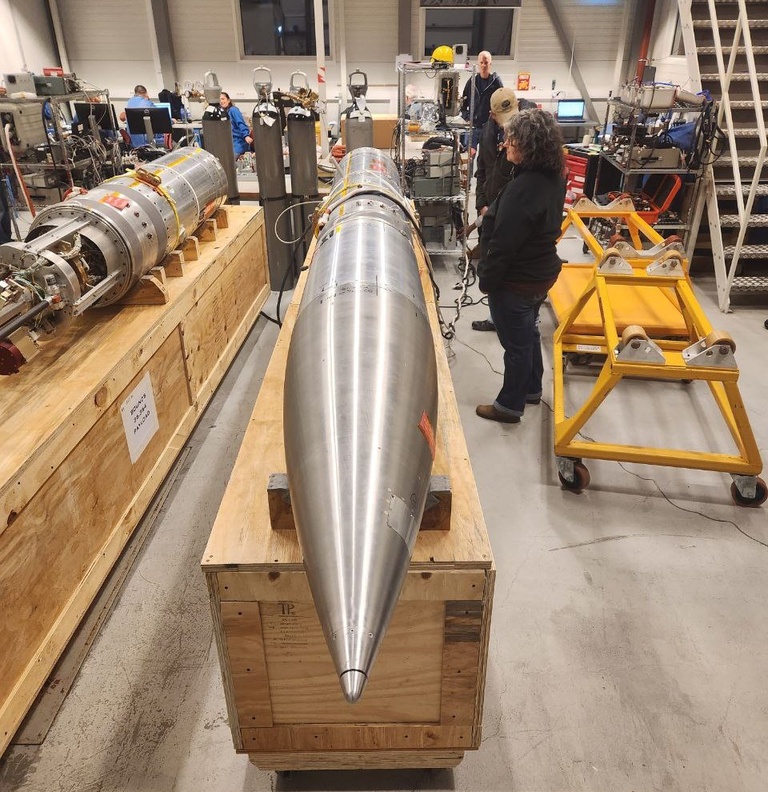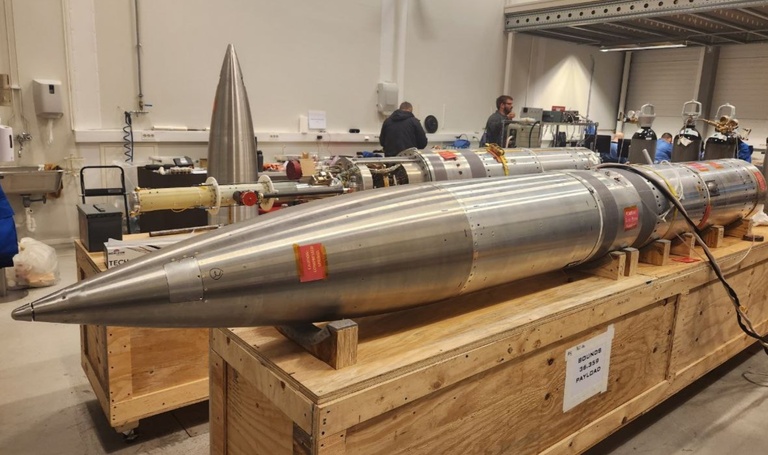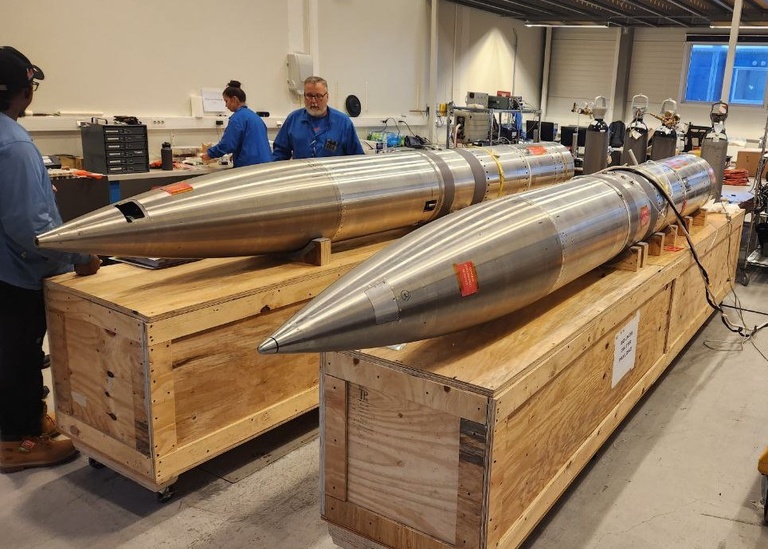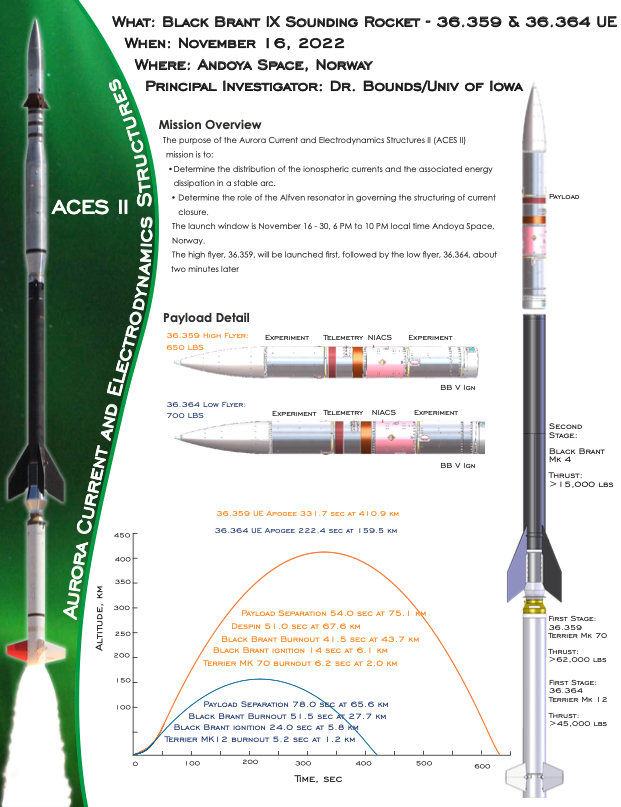
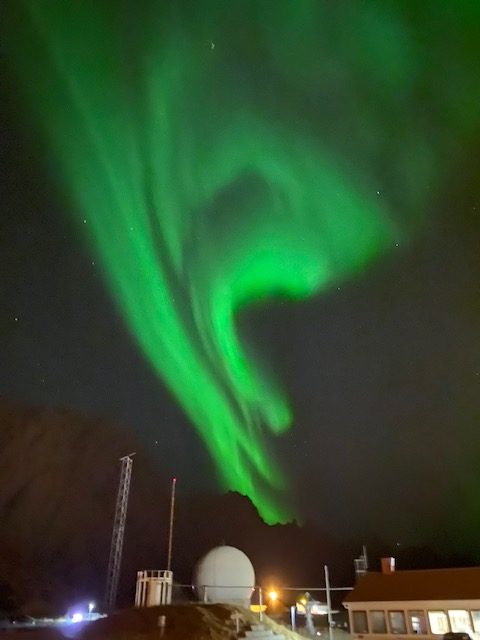
Instumentation
The dual rocket payloads included ring core, Tesseract and CHIMERA magnetometers.
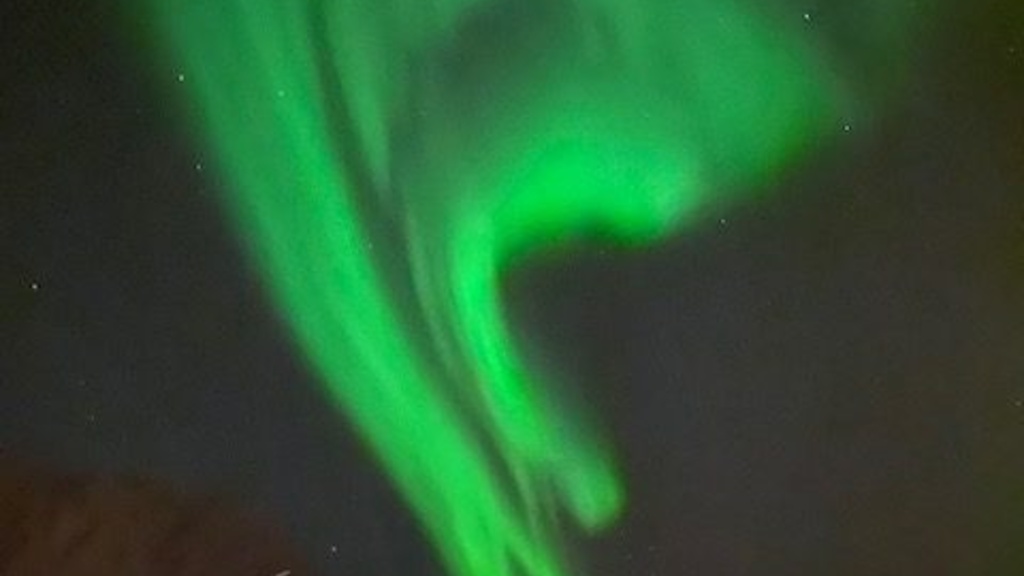
Study discovers electromagnetic waves can make the northern lights glow brighter
Friday, September 5, 2025
A study from University of Iowa researchers reveals that the aurora borealis — the northern lights — appear brighter when electromagnetic waves in space interact with particles inside the aurora. Connor Feltman, a postdoctoral researcher in the Department of Physics and Astronomy at Iowa, examined data from two rockets that were launched into the aurora from Andøya, Norway, in 2022, an Iowa-led experiment known as the ACES-II mission.

Iowa researchers study ionosphere’s role in aurora
Sunday, March 23, 2025
Researchers led by the University of Iowa have learned more about how Earth’s uppermost atmospheric layer may contribute to aurora, the colorful dance of lights in the skies in the Northern and Southern hemispheres.

Bounds Is PI for ACES II Mission Launched from Andøya Space
Tuesday, February 7, 2023
Assistant Research Scientist Scott Bounds is serving as the principal investigator for the Aurora Current and Electrodynamics Structures II (ACES II) mission, which launched rockets from Andøya Space in Norway on Nov. 20, 2022. The NASA-funded project measured the global electric circuit underlying the Northern Lights.
Rockets to Uncover Electric Circuit That Powers the Northern Lights
Monday, November 21, 2022
A NASA-funded rocket mission is headed to space to measure the global electric circuit underlying the northern lights. The two Aurora Current and Electrodynamics Structures II experimental rockets were launched on Nov. 20, 2022 at 6:20:00 p.m. and 6:21:40 p.m. from Andøya Space in Norway.

